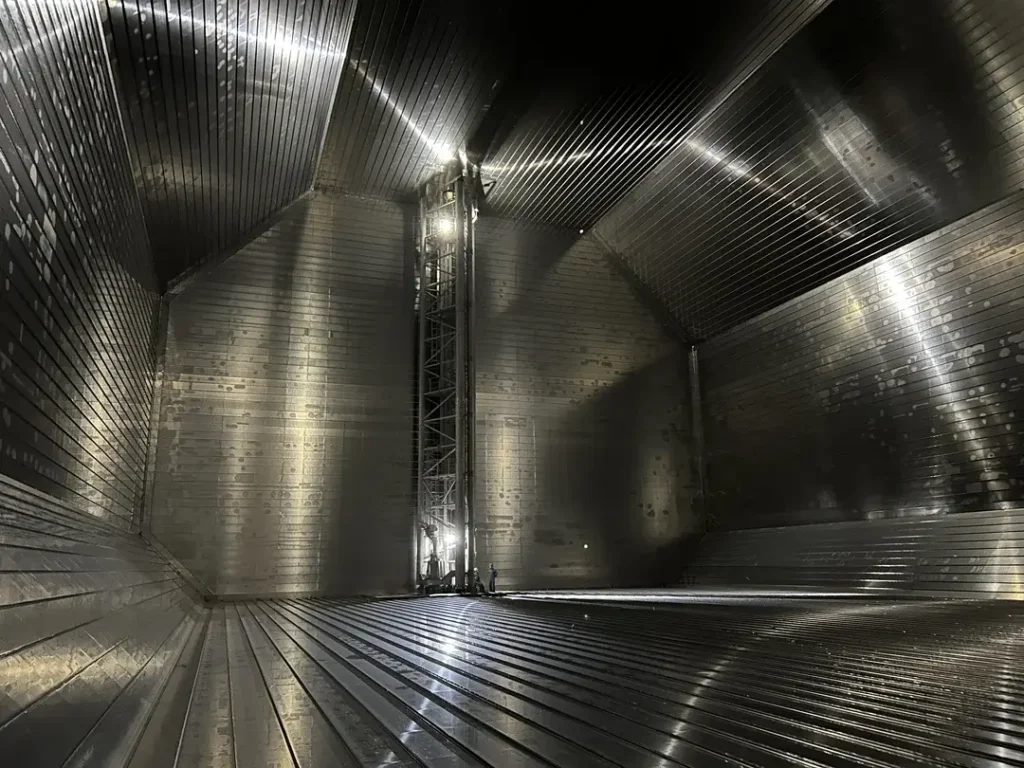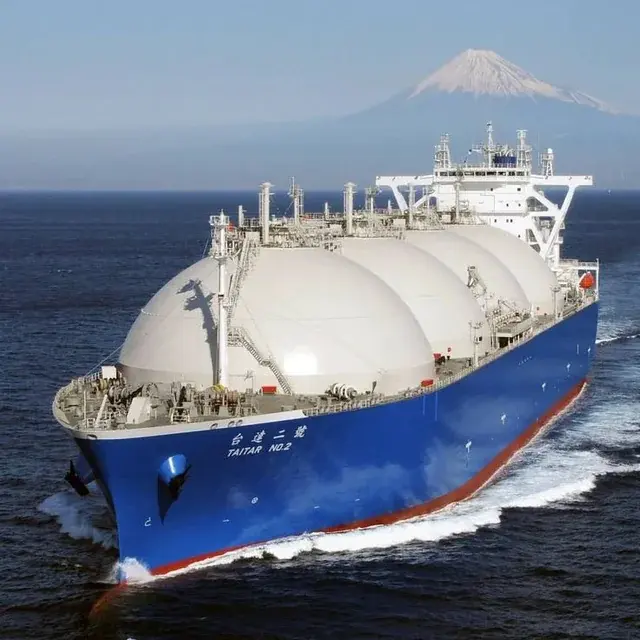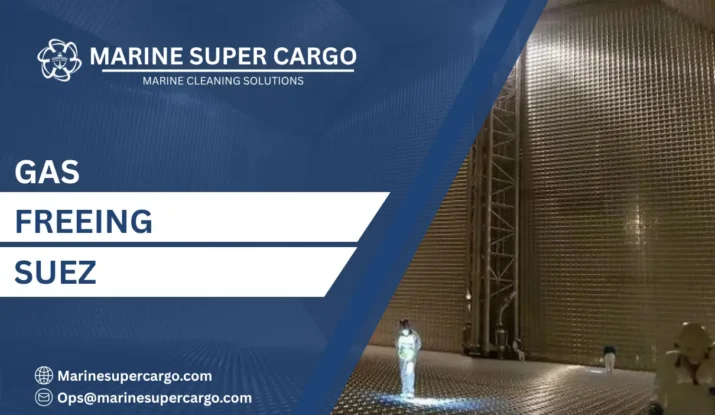Vessels transiting the Suez Canal frequently require gas freeing operations to ensure safe passage and compliance with Egyptian maritime regulations. Gas freeing Suez procedures involve removing hydrocarbon vapors, toxic gases, and inert atmospheres from cargo tanks and enclosed spaces. These operations prove critical for vessel safety, crew protection, and regulatory compliance throughout Egyptian territorial waters.
At Marine Super Cargo, we deliver comprehensive gas freeing Suez services that satisfy stringent Suez Port Authority requirements and international safety standards. Our specialized teams understand the complexities of gas freeing Suez operations within the unique regulatory environment governing canal transit. Proper gas freeing Suez procedures prevent dangerous atmospheric conditions that could endanger personnel, cargo operations, or environmental safety.
Suez Port Authority Regulatory Framework
Egyptian Maritime Safety Standards
The Suez Port Authority enforces comprehensive safety regulations governing gas freeing Suez operations within canal waters and adjacent ports. These requirements align with IMO conventions while incorporating additional provisions addressing the canal’s unique operational environment. Vessels must demonstrate atmospheric safety before commencing repairs, inspections, or specific cargo operations during canal transit or anchorage.
Gas freeing Suez certificates issued by approved surveyors verify compliance with authority requirements. These documents prove essential during canal transit formalities and may be requested by pilot stations, traffic control, or inspection teams. Marine Super Cargo coordinates with authorized surveyors ensuring proper certification for all gas freeing Suez operations.
SOLAS and MARPOL Compliance
Gas freeing Suez procedures must satisfy SOLAS enclosed space entry requirements protecting personnel safety. Atmospheric testing, ventilation standards, and emergency protocols form the foundation of compliant operations. MARPOL environmental provisions govern vapor emissions and waste management during gas freeing activities.


Pre-Gas Freeing Assessment
Cargo History Evaluation
Before commencing gas freeing Suez operations, thorough assessment of cargo history determines potential atmospheric hazards. Previous cargoes influence vapor composition, toxicity levels, and appropriate ventilation strategies. Petroleum products, chemicals, and specialized cargoes each present distinct challenges requiring tailored gas freeing Suez approaches.
Equipment Preparation
Gas freeing Suez operations require functional ventilation equipment including blowers, ducting, and atmospheric testing instruments. Portable ventilators positioned at tank openings create air circulation patterns that systematically displace hazardous atmospheres. Fixed vessel ventilation systems supplement portable equipment during extended operations.
Systematic Ventilation Procedures
Natural Ventilation Phase
Initial gas freeing Suez operations typically employ natural ventilation opening tank hatches and allowing atmospheric exchange. This preliminary phase reduces gross vapor concentrations before mechanical ventilation commences. Natural ventilation duration depends on cargo type, ambient conditions, and initial atmospheric readings.
Forced Mechanical Ventilation
Mechanical blowers accelerate gas freeing Suez operations, introducing fresh air while extracting contaminated atmospheres. Ventilation strategies vary based on tank configuration, but generally proceed from bottom to top ensuring heavier-than-air vapors discharge properly. Multiple blower positions may be necessary for large cargo spaces achieving uniform atmospheric improvement.
Marine Super Cargo employs advanced ventilation techniques optimizing gas freeing Suez efficiency while maintaining safety throughout operations. Experienced teams position equipment strategically ensuring complete vapor removal from all cargo space areas.
Atmospheric Testing Protocols
Multi-Point Sampling Strategy
Gas freeing Suez procedures require atmospheric testing at multiple tank locations including top, middle, and bottom levels. Vapor concentrations vary throughout cargo spaces with heavier gases accumulating near tank bottoms while lighter components concentrate overhead. Testing must verify safe conditions throughout the entire volume before declaring spaces gas-free.
Acceptance Criteria Standards
Suez Port Authority requirements specify atmospheric conditions qualifying as gas-free. Oxygen content must exceed 21% by volume, hydrocarbon concentrations remain below 1% of Lower Explosive Limit (LEL), and toxic gases stay within permissible exposure limits. These criteria protect personnel entering tanks for inspection, repair, or cleaning activities.
Documentation and Certification
Gas Free Certificates
Approved marine chemists or surveyors issue gas free certificates following successful gas freeing Suez operations. These documents specify tested locations, atmospheric readings obtained, and certification validity periods. Certificates typically remain valid 24 hours, though shorter periods may apply for volatile cargoes or elevated temperatures.
The Suez Port Authority may require vessel presentation of valid gas free certificates during specific operations or inspections. Missing or expired certificates create compliance issues potentially delaying canal transit or port operations. Marine Super Cargo ensures proper certification procedures throughout gas freeing Suez services.
Record Book Entries
Vessels must document gas freeing Suez activities in appropriate record books including Oil Record Books for petroleum operations or Cargo Record Books for chemical cargoes. Detailed entries record ventilation methods, duration, atmospheric test results, and certification details. These records satisfy MARPOL and local authority requirements during inspections.
Safety Considerations
Personnel Protection
Gas freeing Suez operations expose personnel to potentially hazardous atmospheres requiring comprehensive protective measures. Respiratory protection, gas detection equipment, and emergency rescue capabilities must be immediately available. Entry permits formalize safety procedures ensuring proper precautions before personnel access enclosed spaces.
Environmental Protection
Vapor emissions during gas freeing Suez operations must consider environmental impact and local air quality regulations. MARPOL Annex VI addresses air pollution from ships including volatile organic compound emissions. While operational requirements necessitate gas freeing, procedures should minimize environmental impact through efficient ventilation techniques.
Frequently Asked Questions
Q1: How long do gas freeing operations at Suez typically require?
Duration ranges from 6-24 hours depending on cargo type, tank size, ventilation capacity, and required atmospheric standards.
Q2: Are gas free certificates mandatory for canal transit?
Certificates are required for specific operations including hot work, tank entry, or when mandated by port authority regulations.
Q3: What atmospheric criteria define gas-free conditions?
Oxygen exceeding 21%, hydrocarbons below 1% LEL, and toxic gases within permissible exposure limits as specified by authorities.
Q4: Can natural ventilation alone achieve gas-free conditions?
For most cargoes, mechanical ventilation proves necessary achieving required atmospheric standards within acceptable timeframes.
Q5: How long do gas free certificates remain valid?
Typically 24 hours from issuance, though validity may be shorter for volatile cargoes or elevated temperature conditions.
Partner with Marine Super Cargo for professional gas freeing Suez services ensuring safety, compliance, and operational efficiency throughout Egyptian waters.


